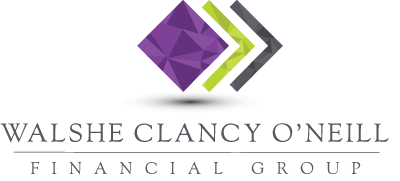- December 1, 2023
- Posted by: Walshe Clancy O'Neill Financial Group
- Category: Finance

A slow and steady race to the 2023 finish line
Whichever way you look at it, the Australian property market is finishing the year on a fairly even keel. Values are on a slight upward trajectory, but it’s clear the head-turning price jumps of the recent past are now in the rear view mirror.
CoreLogic’s national Home Value Index (HVI) has reported a quarterly increase of 2.1%, but a monthly movement of just 0.6% – the smallest monthly gain since the growth cycle commenced in February. As December begins, the median dwelling price in Australia now sits at $753,654, up on the same time last year at $714,475.i
Over the past three months the combined capitals figure just edged out the combined regions rising 2.2% to $827,659 compared with a 1.8% rise to a median of $602,645. A year ago, the capital median was $778,368 while the regional median was $578,506.
November shows a V-shaped recovery
Although prices have experienced a notable slowdown, CoreLogic’s national HVI reached a new record high in November. After a peak to trough fall of -7.5% between April 2022 and January 2023, housing values bounced 8.3% in just 10 months – what CoreLogic’s research director Tim Lawless said demonstrated a clear ‘V’ shaped recovery.
Figures show Perth with its 5.4% rise in values, as well as Adelaide and Brisbane both experiencing a 3.9% jump, are the clear quarterly standouts. Mr Lawless cited low stock levels as the reason behind the positive price performances.
On the other hand, Darwin had the most negative quarter with a subtle -0.7% decline, Hobart only inched up 0.1% while Melbourne and Sydney moved by 0.6% and 1.8% respectively.“The Melbourne Cup day rate hike has clearly taken some heat out of the market, but other factors like rising advertised stock levels, worsening affordability and persistently low consumer sentiment are also acting as a drag on value growth in some markets,” Mr Lawless said, while adding Sydney home values had slipped into negative growth during the last week of November which could push Harbour City prices back by early 2024.
Interest rate impact
Despite what was a surprise rise in the cash rate in November, PropTrack data shows national home prices have so far defied interest rate pressures. In fact, values lifted to a record high in November according to the PropTrack Home Price Index by REA Group.ii
Eleanor Creagh, senior economist at PropTrack, said although national home price growth slowed in November, spring offered increased choice for buyers. “Strong housing demand, buoyed by record net overseas migration, tight rental markets, low unemployment and home equity gains, has worked alongside limited housing stock to offset the impacts of higher interest rates this year,” she said.
“Despite interest rates climbing again in November and the flow of listings hitting the market increasing, housing demand has remained strong and national prices have now risen for 11 straight months.”
Whether the RBA will introduce yet another hike when it meets next week remains to be seen, but all signs point to a positive start to 2024 according to Ms Creagh.
“Looking ahead, price growth is expected to continue as the positive tailwinds for housing demand and a slowdown in the completion of new homes counter the sharp deterioration in affordability and slowing economy. However, prices are likely to lift at a slower pace than they have across 2023.”
Dwelling values over the quarter
Melbourne
Although the quarterly movement was 0.6% for all dwellings to a median price of $779,914, values are up 3% annually. Investors looking at the Victorian capital can expect an average gross rental yield of 3.4%.
Sydney
The Harbour City saw values increase by 1.8% over the quarter to a median of $1.125 million, but annually values are still up 10.2%. The average gross rental yield for Sydney is 3%.
Brisbane
Queensland’s capital experienced a healthy quarter of 3.9%, but a significant annual increase of 10.7%. The median dwelling value in Brisbane is $779,270 and the average rental yield in the city is 4%.
Canberra
The median dwelling price in Canberra is still the second priciest in the country at $842,677 after a quarterly change of 1.1%, but an annual decrease of -0.3%. Currently, rental yields in the city are at 3.9%.
Perth
The West Australian capital is still home to some of the cheapest metropolitan property in the country with a dwelling median of $646,520 (only behind Darwin’s $496,792). Values rose 5.4% over the past quarter and the annual growth is sitting at 13.5%. Perth’s rental yield is 4.6%.
i https://www.corelogic.com.au/news-research/news/2023/heat-comes-out-of-the-housing-market-as-values-across-melbourne-dip-and-sydney-slows
ii https://www.proptrack.com.au/insights-hub/proptrack-home-price-index-october-2023/
